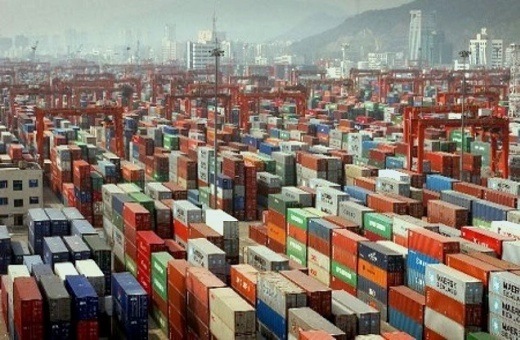SOURCE: Ray Songtree (kauaitruth@gmail.com)
SUBHEAD: The TPP was already going pear shaped. Whatever momentum the US had been able to create is now kaput.
By Yves Smith on 30 January 2014 for Naked Capitalism -
(http://www.nakedcapitalism.com/2014/01/mirabile-dictu-reid-tells-obama-fast-track-killing-toxic-trade-deals-2014.html)

Image above: Harry Reid advising Barack Obama in 2013. From (http://www.jrn.com/kfdi/news/Obama-leans-on-Reid-to-gain-Senate-votes-to-reopen-government-227577611.html).
Obama made yet another pitch in State of the Union Address for his gimmies to multinationals known as the TransPacific Partnership and the TransAtlantic Trade and Investment Partnership. Today that idea went down in flames, at least as far as getting the deals done this year are concerned. From Huffington Post:
And it also checkmates Obama, at least for now. From the Wall Street Journal:
The Administration absurdly tried claiming it would continue to push for fast track, otherwise known as trade promotion authority. Really? Over Reid’s dead body?
Politico contends that the Administration still has alternatives:
However, that cheery view assumes that the situation is static, when opposition to these bills is becoming even more pronounced. Politico again:
Our reader Clive has also described how the Japanese media (and Japan is essential to the TPP being consummated) is being uncharacteristically direct in saying the US was not negotiating, and it would need to make significant concessions to reach an agreement. The TPP was already going pear shaped, and whatever sense of momentum the US had been able to create is now kaput.
Admittedly, the European trade deal is in much better shape, but the specter of a blunt rejection by Congressional leaders of the Administration’s own party may strengthen the hands of opponents. Remember, much can change in a year in politics.
So NC readers should pat themselves on the back. Your calls and e-mails to your Representatives and Senators helped deal the Administration a visible, embarrassing, and thoroughly deserved defeat. If Obama can’t deliver a deal that corporations lobbied for heavily, he’s firmly in lame duck territory.
I also hope you’ll thank your Congressmen for their opposition to these deals, and encourage them to keep up the good work. And be sure to thank Reid and Wyden. Good work!
See also:
Ea O Ka Aina: TPP - Poison for Resilience 1/15/14
Ea O Ka Aina: TPP - Corporate Domination 1/13/14
Ea O Ka Aina: Obama is a corporate toady 12/9/13
Ea O Ka Aina: TPP is NAFTA on steroids 11/24/13
Ea O Ka Aina: With TPP Big Pharma & GMOs gain 11/14/13
Ea O Ka Aina: TPP & GMO labeling ban 10/25/13
Ea O Ka Aina: TPP revealed once more 8/29/13
Ea O Ka Aina: Green Shadow Cabinet 6/19/13
Ea O Ka Aina: Obama & Multi-Nationals in Pacific 11/25/12
.
SUBHEAD: The TPP was already going pear shaped. Whatever momentum the US had been able to create is now kaput.
By Yves Smith on 30 January 2014 for Naked Capitalism -
(http://www.nakedcapitalism.com/2014/01/mirabile-dictu-reid-tells-obama-fast-track-killing-toxic-trade-deals-2014.html)

Image above: Harry Reid advising Barack Obama in 2013. From (http://www.jrn.com/kfdi/news/Obama-leans-on-Reid-to-gain-Senate-votes-to-reopen-government-227577611.html).
Obama made yet another pitch in State of the Union Address for his gimmies to multinationals known as the TransPacific Partnership and the TransAtlantic Trade and Investment Partnership. Today that idea went down in flames, at least as far as getting the deals done this year are concerned. From Huffington Post:
“I’m against fast track,” [Harry] Reid told reporters Wednesday on Capitol Hill, before suggesting a fast-track bill introduced by Sen. Max Baucus (D-Mont.) may not get a vote.Although Reid was known to be opposed to fast track, it’s quite another matter for him as a Democratic Congressional leader to tell Obama to take a hike. I can’t recall such frontal and public opposition to an important Administration initiative before. This is really humiliating.
“We’ll see. Everyone knows how I feel about this. Senator Baucus knows, [potential backer] Sen. [Ron] Wyden knows. The White House knows.”
Indeed, Reid cautioned the president and his allies to back off.
“I think everyone would be well advised just to not push this right now,” the majority leader said.
And it also checkmates Obama, at least for now. From the Wall Street Journal:
Fast-track authority is seen as crucial to cementing a trade deal known as the Trans Pacific Partnership because of the reassurance it would provide negotiating partners in a last, tough round of talks. Other nations are typically reluctant to make trading concessions unless the U.S. can offer assurances that trading pacts won’t be amended or rejected at the last minute….And from a later Wall Street Journal story:
“You can kiss any new trade deals goodbye,” said Sen. John Cornyn (R., Texas.) “I think the majority leader’s focus is on the November elections and he doesn’t want to expose his vulnerable members to controversial votes.”
Senate Majority Leader Harry Reid broke publicly with the White House Wednesday on trade policy, instantly imperiling two major international trade deals and punching a hole in one piece of the economic agenda the president outlined in his State of the Union address a day earlier.And although it received much less media coverage, matters for Obama got even worse because Ron Wyden signaled he’s not on board either. This matters because Wyden is taking over as the chairman of the Finance Services Committee when Max Bacus becomes Ambassador to China.
The Administration absurdly tried claiming it would continue to push for fast track, otherwise known as trade promotion authority. Really? Over Reid’s dead body?
Politico contends that the Administration still has alternatives:
A blocked Senate leaves the Obama administration with two options: wait until after November’s election and try its luck with a new Congress or push for passage of the Pacific Rim deal – which is likely to contain a host of contentious provisions – while insisting that lawmakers not change a word.But my Congressional correspondents think another gambit is more likely: to make some cosmetic changes and try to get the bill passed during the lame duck session, on the assumption that some Democrats (particularly those who are leaving office) will use the cover and change positions.
However, that cheery view assumes that the situation is static, when opposition to these bills is becoming even more pronounced. Politico again:
Reid’s comments come amid mounting Democratic opposition to the bill. On Monday, 550 labor, environmental and consumer advocacy groups – including the United Autoworkers, which has lent Obama critical backing on previous free trade pacts such as the South Korea deal – sent a letter to Congress urging them to reject the fast-track bill.And the repudiation by Reid and the stiffening resistance to these bills won’t go unnoticed overseas. The Wikileaks publication of drafts of two critical chapters showed a wide gap between the US positions and that of many of its supposed partners.
Our reader Clive has also described how the Japanese media (and Japan is essential to the TPP being consummated) is being uncharacteristically direct in saying the US was not negotiating, and it would need to make significant concessions to reach an agreement. The TPP was already going pear shaped, and whatever sense of momentum the US had been able to create is now kaput.
Admittedly, the European trade deal is in much better shape, but the specter of a blunt rejection by Congressional leaders of the Administration’s own party may strengthen the hands of opponents. Remember, much can change in a year in politics.
So NC readers should pat themselves on the back. Your calls and e-mails to your Representatives and Senators helped deal the Administration a visible, embarrassing, and thoroughly deserved defeat. If Obama can’t deliver a deal that corporations lobbied for heavily, he’s firmly in lame duck territory.
I also hope you’ll thank your Congressmen for their opposition to these deals, and encourage them to keep up the good work. And be sure to thank Reid and Wyden. Good work!
See also:
Ea O Ka Aina: TPP - Poison for Resilience 1/15/14
Ea O Ka Aina: TPP - Corporate Domination 1/13/14
Ea O Ka Aina: Obama is a corporate toady 12/9/13
Ea O Ka Aina: TPP is NAFTA on steroids 11/24/13
Ea O Ka Aina: With TPP Big Pharma & GMOs gain 11/14/13
Ea O Ka Aina: TPP & GMO labeling ban 10/25/13
Ea O Ka Aina: TPP revealed once more 8/29/13
Ea O Ka Aina: Green Shadow Cabinet 6/19/13
Ea O Ka Aina: Obama & Multi-Nationals in Pacific 11/25/12
.








